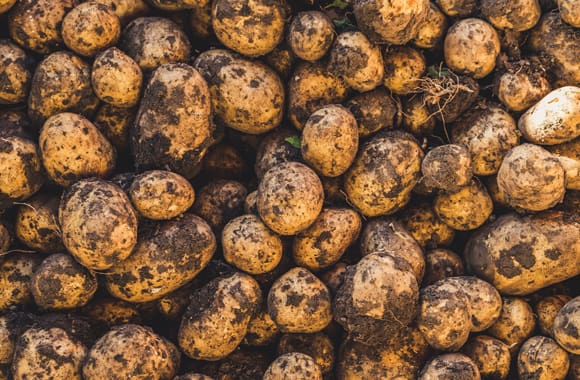
Seed Treatments and Beyond to get Your Potatoes Off to a Strong Start

Seed Treatments and Beyond to get Your Potatoes Off to a Strong Start
When it comes to potatoes, it’s never too soon to start thinking about protection against early season disease and different ways to get your potatoes off to a strong start, even if you haven’t yet finished harvest. Seed treatments and fertilizer management practices that optimize nutrient efficiency are excellent ways to maximize yields.
Although applying seed treatment may seem “old hat” for many, it remains a fundamental step to give growers a good start to their program and protect a seed before putting it into the ground.
“Right before planting potatoes into the cold, wet ground each spring, a potato seed piece is freshly cut, leaving spots for disease and insects to get in easily,” said Stacy Kniveton, a crop consultant for Wilbur-Ellis Agribusiness who covers the Columbia Basin area. “That’s why it is crucial to choose a quality seed treatment that will protect your crops from a broad spectrum of disease.”
In the Pacific Northwest, it’s important to select a seed treatment with mancozeb, Alder and Douglas fir bark that can aid in the control of Fusarium seed-piece decay and reduce the spread of phytophthora infestations during seed cutting operations.
“By applying a seed treatment that is formulated with dust bark and mancozeb right away, you limit the spread of these diseases drastically,” he added. “This ultimately reduces out-of-pocket costs to treat crops and increases yields.”
Alder and Douglas fir bark are natural wound healers on the cut seed piece surface. The blend of bark results in hydrophobic activity on cut seed surfaces while allowing for improved handling with less irritation. They also help seed-pieces dry when used with liquid seed-piece applications.
When looking for ways beyond seed treatments to provide season-long protection, Kniveton shares that many growers add in-furrow treatment to their programs and tweak fertilizer application methods.
Protecting seeds with in-furrow applications
An in-furrow application is the process when a fertilizer or spray is applied at the bottom of the furrow. The spray is typically angled toward the soil that is then turned over to close the furrow.
“Nozzle sprays can be a great solution when a seed treatment doesn’t protect against certain pests,” said Kniveton. “For example, there’s not a seed treatment for wireworms, but there is a good chemical that you can spray in the furrow with the seed pieces that provides season-long wireworm control.”
Banding fertilizer provides early root access
Banding fertilizer refers to spreading fertilizer parallel and close to each crop row without spreading it directly over the seed piece. This helps provide crops early root access and helps growers use fertilizer materials more efficiently.1
“Banding fertilizer helps deliver essential nutrients directly to the area surrounding the seed piece,” said Kniveton. “So as soon as the roots grow, they don’t have to travel far to pick up the nutrients they need and the potato can begin growing at a faster rate.”
According to the University of Idaho Extension, the low soil temperatures early in the growing season can reduce nutrient uptake by reducing root physiological activity and growth. By banding fertilizers near roots or applying higher rates, growers can compensate the effects of low temperature.1
Kniveton recommends working closely with a crop adviser to identify the best seed treatments and fertilizer practices for your fields.
Source
1 Stark, J., Westermann, D., & Hopkins, B. (n.d.). Nutrient Management Guidelines for Russet Burbank Potatoes. Retrieved February 10, 2021, from https://www.extension.uidaho.edu/publishing/pdf/BUL/BUL0840.pdf

